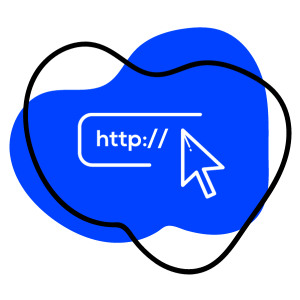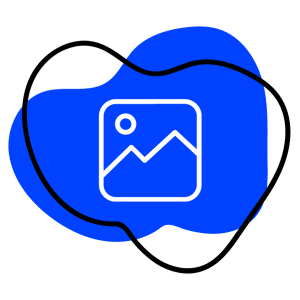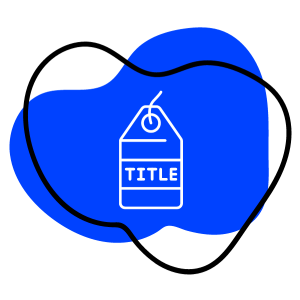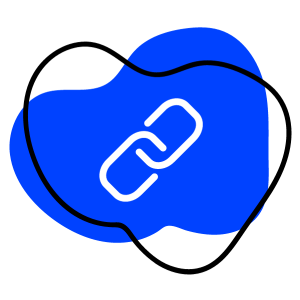Search Engine Optimization
Request aFree Consultation
Provide us some basic information and we’ll follow up with you to set up a free one-on-one consultation via Zoom.

What is SEO and why do you need it?
Just as important as having a quality website is making sure potential customers in your target market can find it! Search marketing encompasses many things including content marketing, paid search and on-page optimization to help your website be found.
There is no shortcut to good organic rankings.
Search engine optimization (SEO) refers to techniques that help your website rank higher in organic (or “natural”) search results, thus making your website more visible to people who are looking for your product or service via search engines.
So, why is it important for your business website to be listed on search engines? On Google alone, there are over 50,000 searches conducted every second. The longer your website is not indexed on Google, the more chances you miss out on of someone visiting your website, reading your content, and potentially buying your product or service. Practicing SEO basics, as well as more advanced techniques after those, can drastically improve your website‟s ability to rank in the search engines and get found by your potential customers.
Today, there is no “secret sauce” to showing up high in the search engine results. You must work hard to create quality content that improves relevancy, develop strong inbound links, maintain your site and other web properties on a routine basis, leverage social media, and more. As a search engine marketing agency, TBG consultants will help you develop a plan to effectively roll out and manage with your regular business responsibilities, whether you do it in-house, let us assist you with areas you don’t feel comfortable with, or pass it off to us to manage entirely.
At the end of the day, our measurement of success isn’t how many visitors we sent to your site. More importantly, we want to know how many leads you generated and how much business was closed. Effective search marketing is critical to your success and ours, and as a search engine marketing agency, we’ve chosen to invest in heavily over the years to ensure our consultants are always on top of their game.
On-Page Search Engine Optimization
There are multiple elements on your website that you can control to make it easy for the search engines to index your content and understand what it is all about.

Website Content
You want to write content that your audience will find valuable and engaging. Aside from the topical nature of the content, the way you format your webpages can have an impact on how the search engine bots digest your content. Every webpage you create should have a thought-provoking headline to grab the reader’s attention, and should also include the keyword or phrase that the webpage covers. Other body formatting, such as bolding certain keywords or phrases, can help stress the importance of phrases you are optimizing for.

URL Structure
The actual structure of your website URL can have an impact on the search engines’ ability to index and understand your website’s content. Opting for a more organized URL structure will have the greatest impact. Some website creation software will insert arbitrary numbers and code in the URL. Although this may be optimal for the software, it serves no other purpose. If you can edit the URL to include the title of your webpage, you should do so. In fact, some website creation software will automatically create URLs based off of your webpage content in order to eliminate this issue.

Images
There is nothing worse than landing on a webpage and being faced with mountains of text. Not only are pictures a great way to break up sections of text, but they also serve as an opportunity to communicate with the search engines. Because search engines cannot tell what a picture is by scanning it, they look for clues in two places. Every picture you upload to your website will have a file name. When the picture is inserted on your website, the picture’s file name actually lives in your website’s sources code, or HTML. Since the search engines scan your website’s code, you should use file names that describe the picture. For example, “red-tennisshoesvelcro.jpg” is much more useful than “pic12345.jpg”. Additionally, you can give the search engines an extra hand by including alt tags on all pictures on your website. Alt tags are short snippets of code that allow you to tag each photo on your site with a short text blurb.

Title Tags & Meta Tags
Besides an actual text headline on your page, every webpage you create has a title tag. This is the text snippet that appears in theupper left corner or on the tabs of your web browser. Also, the title tag is the blue link that the search engines show when they list your webpage on the SERP. Title tags max out at 75 characters, so choose your words wisely. Meta tags are snippets of code you can include within your webpage’s HTML. The meta tags are usually located near the title tag code in the head of your HTML. There are two meta tags – meta description and meta keywords. The meta description is a text snippet that describes what your specific webpage is about. Meta descriptions are usually the first place a search engine will look to find text to put under your blue link when they list your website on the SERP.

Headline Tags
When the search engine bots scan your webpages, they look for clues to determine exactly what your webpage is about. Keywords that are treated differently than most others on the page show the search engines that they are more important than other keywords on the page. This is why the use of headline tags within your page is so important. By using various headline tags (each tag will produce a different size headline), you not only make your webpage easier to digest from a reader’s standpoint, but you will also give the search engines definitive clues as to what is important on the page.

Internal Linking
When creating content for your website on your blog or on specific webpages, you may want to reference other pages on your website. You can reference these other pages by inserting a link to another webpage within a specific webpage’s content. The use of anchor text is recommended when linking to another webpage or even another website. When anchor text is used, it implies that the page you are linking to is about the keyword or phrase you use as your anchor. This is yet another way you can help out the search engines.
Off-Page Search Engine Optimization
Compared to on-page SEO, off-page SEO can certainly be more difficult to execute. Off-page SEO entails building relationships with other websites through the creation of attractive content, or reaching out to the people who run the websites. This process of building relationships is called link building. Who is linking to you, how they are linking to you, and how your content is shared in social networks and across he web are all factors that can have a significant impact on your ability to rank on the SERP.
Do you know? You can use free tools to determine what websites are already linking to you, something the search engines are very concerned about. Although twenty inbound links from your friends’websites may be a good start to link building, garnering one link from a major publication or educational website (with a .edu address) could be worth more than the power of those twenty links combined.
Since the Internet is essentially an inter-linking network of pages and websites that make up the World Wide Web, not every link is created equal. Links from major publications and blogs usually provide more link juice because they are visited by millions of people each day.
Therefore, they have an incredible impact on the ability for webpage to go viral.
It is in a newspaper website’s very nature to link to authoritative websites that relate to current stories and trends. Therefore, these websites are most likely more valuable than others. The same goes for education websites with a .edu domain, since these are reserved for educational institutions. As such, the search engines realize that links to your website from these websites equate to you having more authority.
Just like when anchor text is used to link an internal webpage to another one of your webpages, the use anchor text when another website links to you can be extremely helpful in creating relevancy to certain keywords and phrases. If you have the option, always request keyword-rich anchor text for a link that uses your domain. That said, if you have no other option, still take a link with anchor text to your domain. All link juice is good.
A common practice in linking building is link trading, or “I will put a link to your website on my website if you put a link to my mine on yours.” These types of links are referred to as reciprocal links. Since all link juice is good link juice, reciprocal links are not prohibited, but their value is certainly not as good as a one-way link to your website. There was most likely a time when reciprocal links were just as good as any other, but the search engines are always getting smarter in determining how much juice a link should receive.
Just like any other aspect of SEO, throwing money at link building is bad. Paying others to link to you is strictly prohibited by the search engines. In fact, all paid links must include a tag, called a no-follow tag, which tell the search engines not to give those links credit. If you’re caught with un-tagged paid links (the linker or the linkee), your website could be suspended from the search engines or blacklisted for good.
Links to your website from advertisements are not counted as inbound links by the search engines. If they discover paid link relationships that are not classified as advertisements, you risk having your website suspended from being listed on the SERP, or even blacklisted if the instance is deemed severe enough.
The use of social networks like Facebook, LinkedIn, Twitter, and others has exploded over the last few years. In fact, the average person spends nearly 2.5 hours on social media every day. With hundreds of millions of users across these social networks sharing content they find online with their friends and followers, search engines have begun to take notice.
According to SEOMoz, the amount of social activity a webpage has on social networks (shares, recommendations, likes, links, +1‟s, etc.) is an important factor in that page’s ability to rank on the SERP. Simply put, search engines have realized that content shared on social networks is extremely influential and should rank higher. Beyond using social networks to engage new prospects, drive leads, and build brand awareness, businesses should consider all the SEO benefits they miss out on by not having a brand presence.
To capitalize on the boost to your SERP rankings from social media, you need to make your content easy to share. Implementing social network buttons across your website is the easiest way to accomplish this. Installing the buttons is easy if you use a service like AddThis.
Nearly every business uses email to nurture relationships with current leads and customers and promotional email blasts to attract new ones. Unsurprisingly, email marketing has exploded with the death of direct mail. It has never been easier to set up an email program, upload your leads, and send them communications. Obviously, the extreme rate at which businesses have adopted email has deteriorated its effectiveness industry-wide. There is so much noise that you must make every email send count.
Just like you need to make the content on your website easy to share on social media, you need to do the same for email. Aside from having a clear call-to-action in your emails to nurture your list, drive leads, and convert them to customers, it would be best to make it easy for your email readers to share the content with friends and post it to social networks. This will increase the reach of your website content and make it easier for you to get inbound links for SEO.